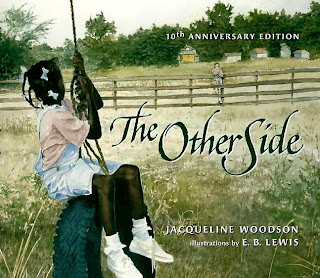PLOT:
Ted
Hammond lives in a very small town located in Plattsford, Nebraska. The population is rapidly declining and there
is only a one room school house for the entire town. But that could soon close down. Even though
the school is small Ted has managed to hook himself to reading mystery and
detective stories. He loves to read books and tries to solve the mystery before
he finishes the books. Ted has many chores he lives on farm 3 miles from town
and he drives his bicycle to get around from place to place. Along with his farm chores he also has a
paper route. He delivers his newspapers
early in the morning before school. One
day he was riding past an abandoned farm house when he sees a young girl in the
window. Ted begins to wonder why there
is someone in this abandoned home and he feels there is something mysterious
going on. He can’t help but to try and
investigate the situation. As he begins
his adventure he soon finds out that it is a family of three that are
struggling to get to Colorado. It is a
mother and two kids. The girl he saw in
the window is April. As he begins to
learn about their situation he also tried to help them by bringing them food
and water. He knows he cannot help the family on his own
so he turns to his teacher and his mother for help. In the end the family gets
to their final destination and Ted is ready to move on to the next mystery.
Clements, A. (2006). Room one a mystery or two. New York: Scholastic Inc.
IMPRESSION
OF THE BOOK: This
is a good book for the middle school student.
It has a combination of both genders and any student who likes mystery
would really enjoy this book. I like the
book because it also has room for generosity. There are kids and people that
are willing to help others and their own expense. In the book there is chapter
that devotes to Ted being generous to the stranded family. He goes and he buys food out of his own
savings and takes the food to them not expecting payment in return. He knows that this family needs help and he
is willing to do whatever it takes to help them. The mother even tells Ted that
it is okay to help people. There is
another part in the book where the mother tells Ted that if a family really
needed help they could house them in the guest house they would share whatever
little food they had with the family in need.
I also like that way Ted’s character is very honest and
trustworthy. When he turns to his
teacher for help Ted makes her promise not to say anything and for a brief
moment he thinks she betrayed that promise.
Turns out that she didn’t and she explained that to him. It’s important to know that kids seek people
they can trust and when that trust is breached it really hurts the kids. In the book when Ted thinks that he was
betrayed by his teacher he began to think that maybe he should of lied instead
of telling the truth. This book is a great example of honesty, loyalty, trustworthiness
all wrapped up in a great mystery story.
REVIEWS: Kirkus Reviews (June 1, 2006)
Sixth-grader
Ted Hammond, who loves a good mystery, finds one in real life when he sees a
face in the window of an abandoned farmhouse while on his paper route.
Befriending the homeless family of a fallen Iraq War soldier he discovers
hiding there has surprising consequences, including helping his one-room school
stay open. This engaging middle-grade mystery is nicely up-to-date but set in a
kinder, gentler and rapidly disappearing world. Not only is Ted responsible
about delivering papers on his bicycle every morning and doing his farm chores
in the afternoon, he was a Boy Scout until the scoutmaster moved away, and he
takes his Scout Law seriously. Like the boy, his Plattsburg, Neb., community is
genuinely generous, willing to open their arms and pocketbooks to welcome the
family. Once again, Clements offers readers an intelligent protagonist,
trustworthy adults, an interesting school situation and a real-life problem in
a story that moves swiftly enough even for reluctant readers. (Fiction. 8-12)
Kirkus Review. (2006).
[Review of the book Room one a mystery or
two, by Andrew Clements]. Kirkus Reviews Issue. Retrieved
July 31, 2013, from https://www.kirkusreviews.com/book-reviews/andrew-clements/room-one/
USE IN THE LIBRARY: I would use this book in a book
talk and really express the “Note taking” part. After my book talk I would
explain to students how important it is to take accurate notes about factual
information. I would be prepared to have
a person from the school walk to the library for a few minutes have them take
something off my desk and then have them leave.
Without the students knowing I would tell them to take out a piece of paper
and have the students write about everything they saw and then we would discuss
it. I would then have that same person
come in to compare what students wrote to see how accurate they were.







